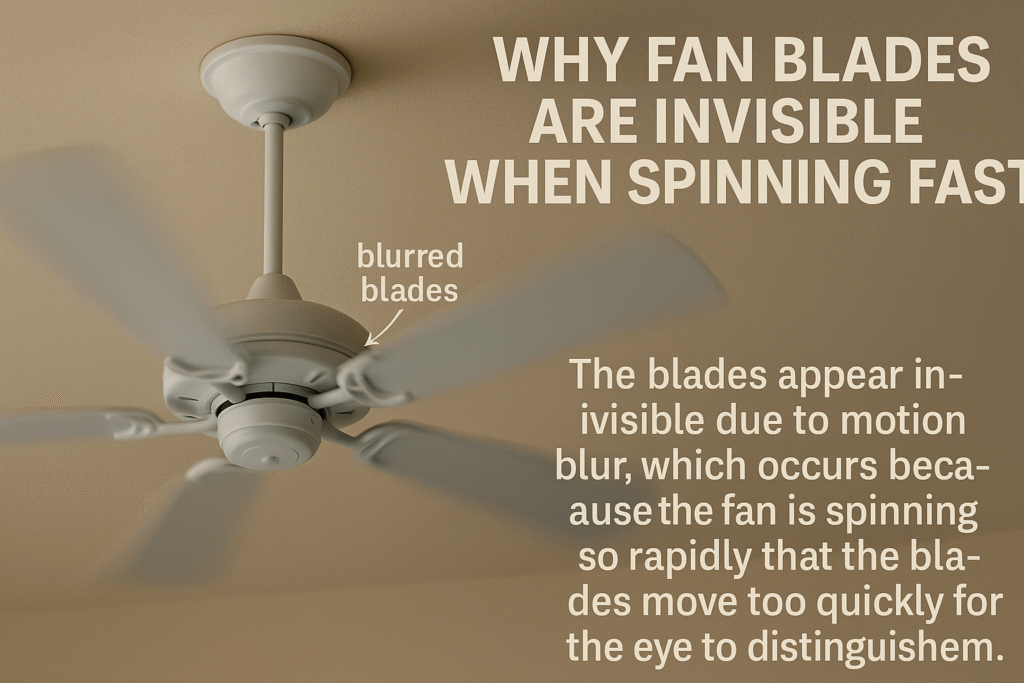As the temperature rises, fans, coolers, and air conditioners become essential companions in our daily lives. There’s a certain comfort in sitting beneath a fan after a long, hot day; the cool breeze offers a refreshing relief. However, if you’ve ever observed a fan in motion, you might have noticed that as the speed increases, the blades become harder to see. What causes this phenomenon? Let’s explore the science behind it.
When a fan rotates at high speeds, the blades move so quickly that our eyes struggle to perceive them clearly. This occurrence is a type of optical illusion known scientifically as “persistence of vision.” Essentially, when objects move at rapid speeds, our eyes and brain cannot capture a clear image. Instead, they create a blurred representation of the object’s swift movements, making the fan blades appear uniform or, at times, completely invisible.
This optical illusion isn’t limited to just fans; it applies to other fast-moving objects as well. For instance, when a car speeds down the road, its wheels may seem to rotate in the opposite direction. This illusion arises because our eyes and brain cannot accurately register every movement of an object traveling at high speed.
The same principle is utilized in movies and videos. In film, a series of images are displayed in rapid succession, and our brains interpret this quick sequence as a continuous, smooth motion. Similarly, when we look at the fast-spinning blades of a fan, our perception merges their motion into an indistinguishable blur.
Understanding this phenomenon not only enhances our appreciation for the mechanics of everyday appliances but also sheds light on how our visual perception works in relation to speed and motion. So, the next time you find yourself sitting under a fan, marvel not just at the cool breeze but also at the fascinating science that makes those blades seem to vanish before your eyes.



